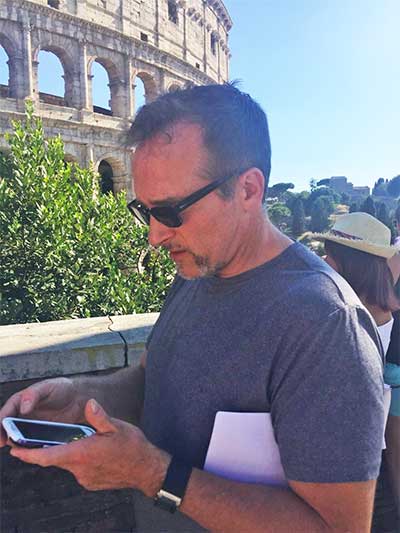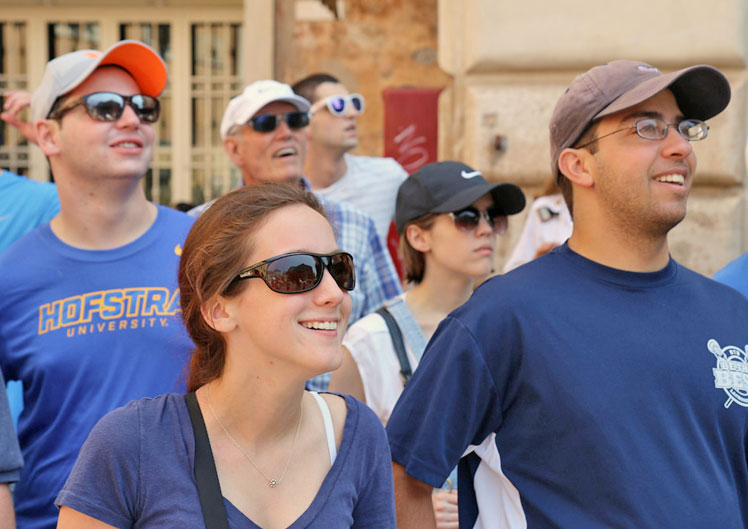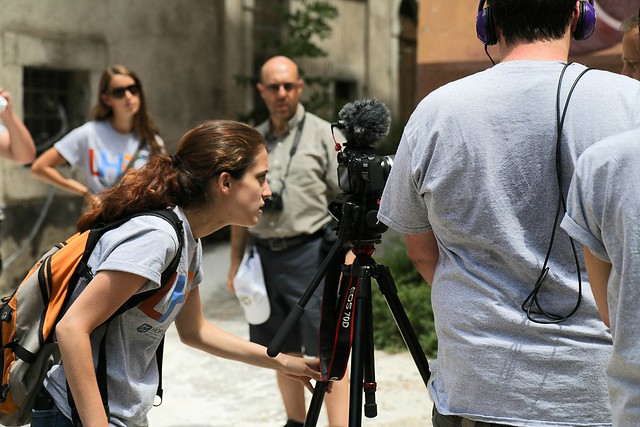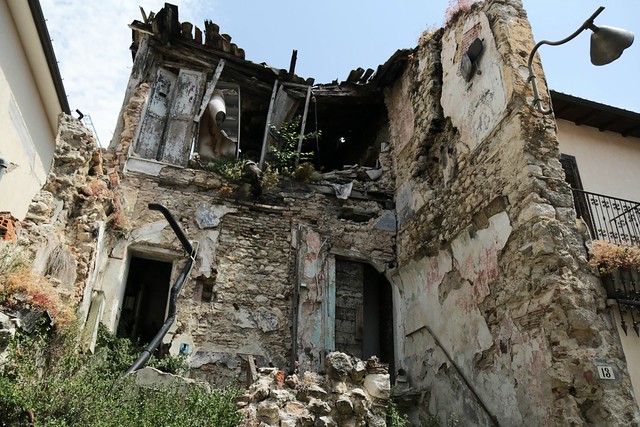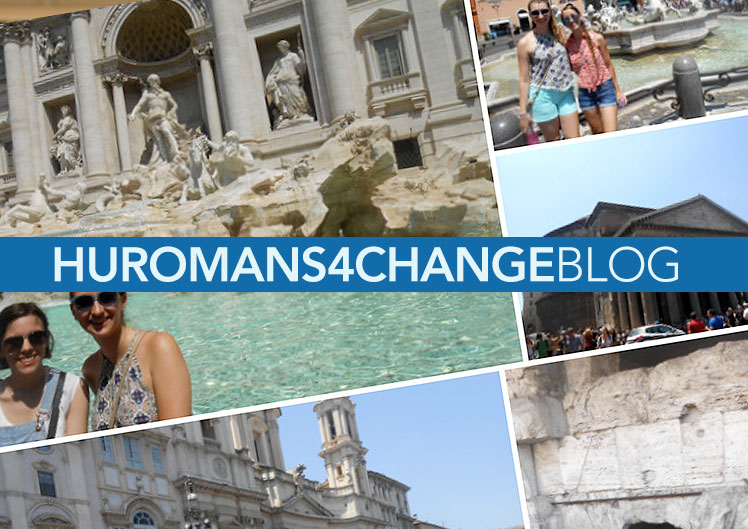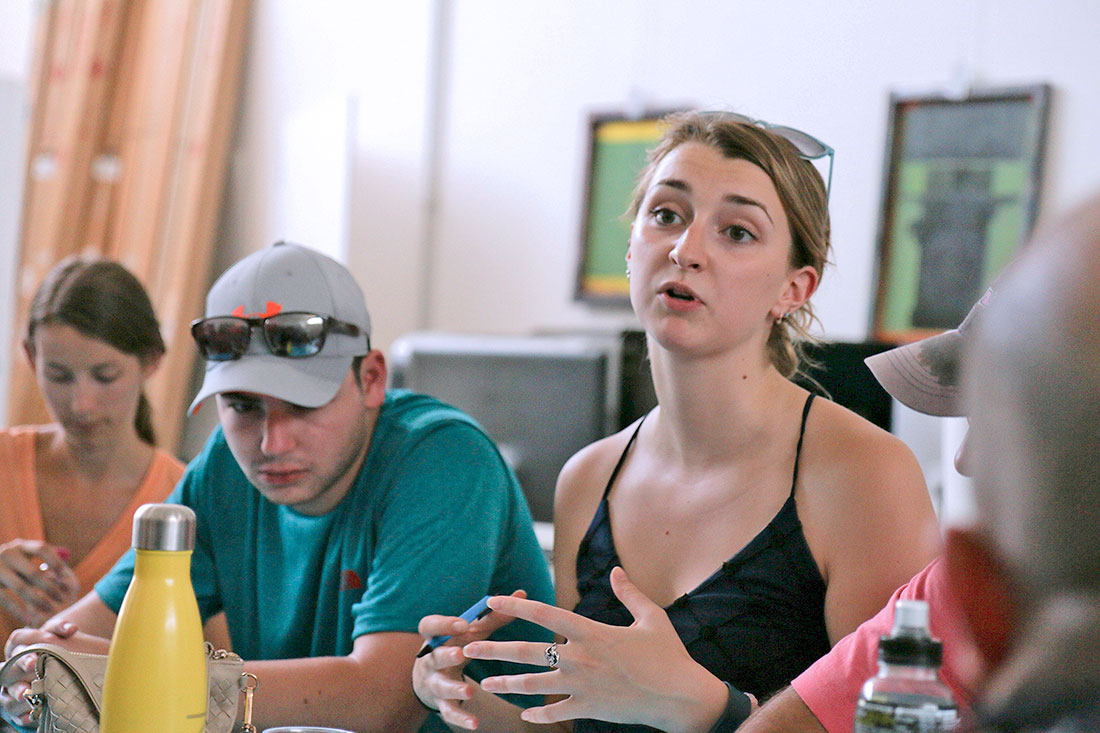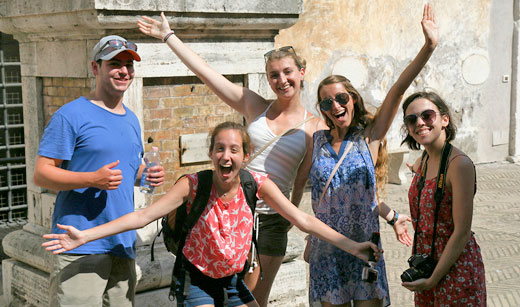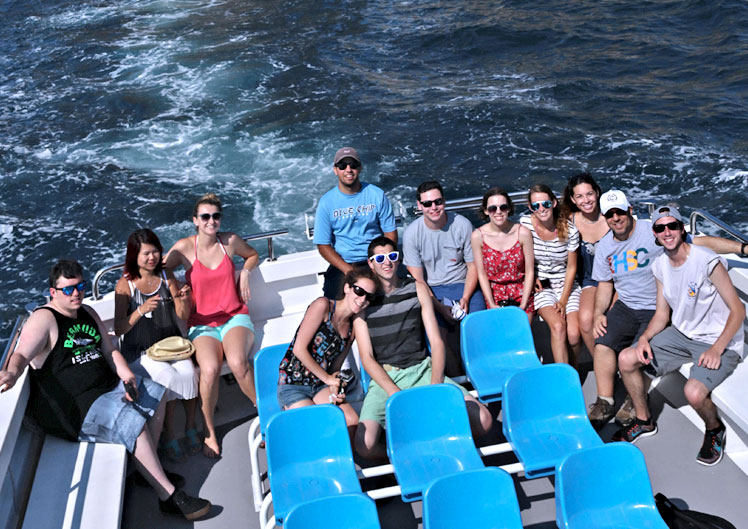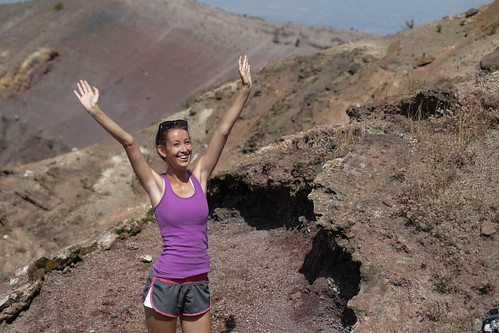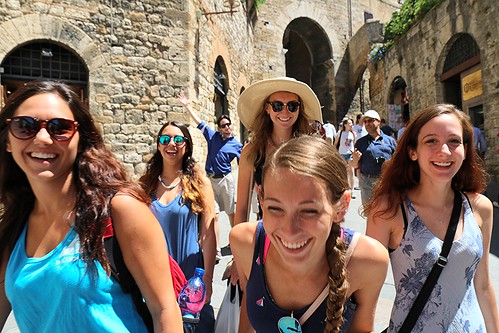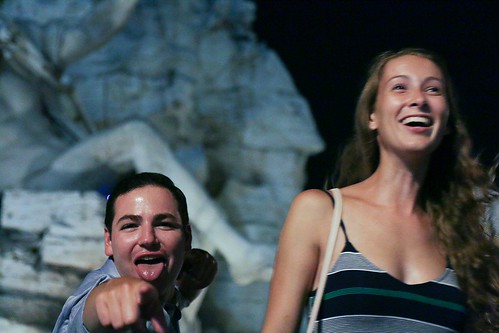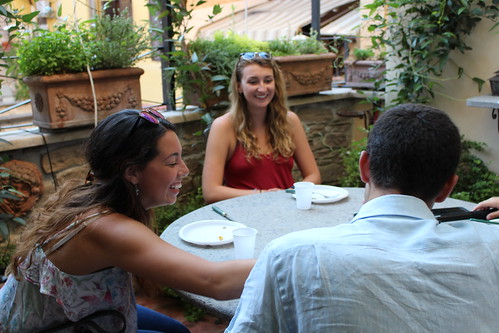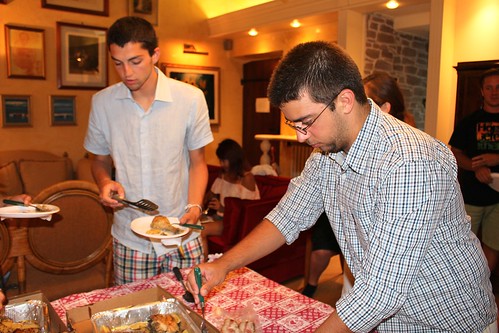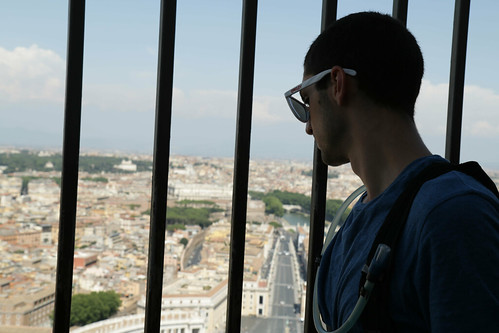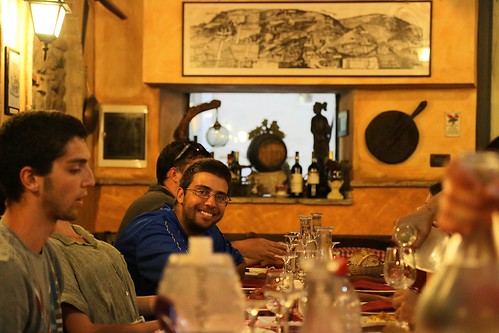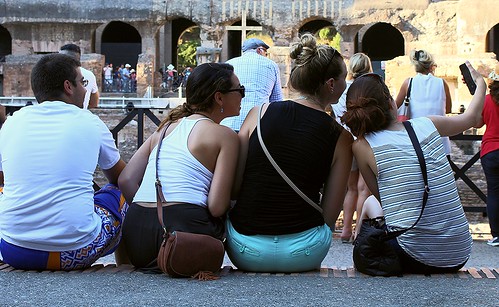The group is, three weeks into the trip, aware of each other’s rhythms and likes, and as they walk down the darkening streets, they lean on each other, taking spontaneous selfies, as close as a group can be when they work and play together. “The bond I’ve created has been unlike any other. Very few of us had known each other before this program. I feel as though, in a way, these people are my soulmates. We take care of each other, we look out for each other, and we have each other’s backs,” according to Iadanza.
And the bond extends to the faculty members, too. “I know I can count on Professor Morosoff, Hillebrand, for anything. The trust I’ve built with them, how they’ve pushed me, not only in the classroom but outside the classroom and I know if I have any issues at all that they’re going to help me.”
“We do not tend to take the ‘We’ll see you tomorrow morning’ class approach,” said Hillebrand. “Instead, we spend time with our students doing walking tours or participating in a guided tour of some site. At night, we often have dinner with our students or even host dinner for our students at our apartment. We have a movie night every week which the students love. It’s very demanding in that regard, but it allows the students to experience so much more. The class doesn’t end when the official time of the class ends. Rather, the class extends throughout the day.”
After the evening tour of the ruins is complete, the group makes its way through the dark but lively streets to Interno 92, a restaurant Hillebrand discovered on his first trip to Rome. Below street level, resembling a subterranean chamber, the rough ceiling beams accentuating the low stucco covered ceilings, the restaurant is dark and inviting. And it is a reintroduction to red meat, which, according to Hillebrand, is rarer abroad than it is at home in the U.S.
The students and Hillebrand look forward to having the steak that Interno 92 offers, and Hillebrand coaxes them into trying the carpaccio. A few do. They relax over dinner, taking a breath from their 12-hour day, recalling the day’s events, planning the work they will pick up again early the next morning, making plans for their weekend excursion to Ibiza. Hillebrand tells stories, while Morosoff and a few of the public relations students talk about social media over their coffee.
“We’re close to the students 24/7 and that creates a real bond with the students, one we would not normally have,” explains Morosoff. “It creates relationships from a professional, personal, and academic level. We’re really living with each other, giving us the opportunity to hear and see what the students care about in a much deeper way, and we can share our professional, personal, and academic perspectives in a way that you couldn’t in a classroom.”


